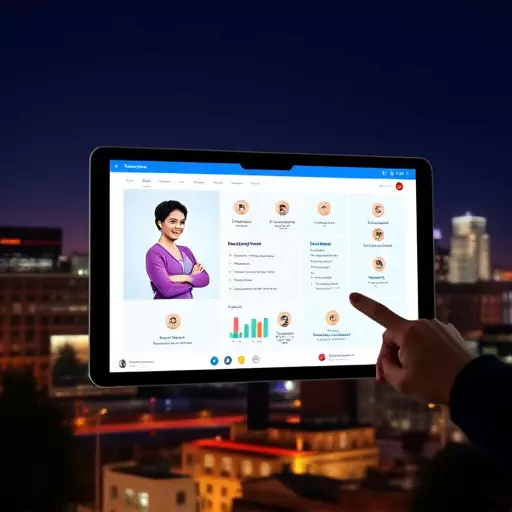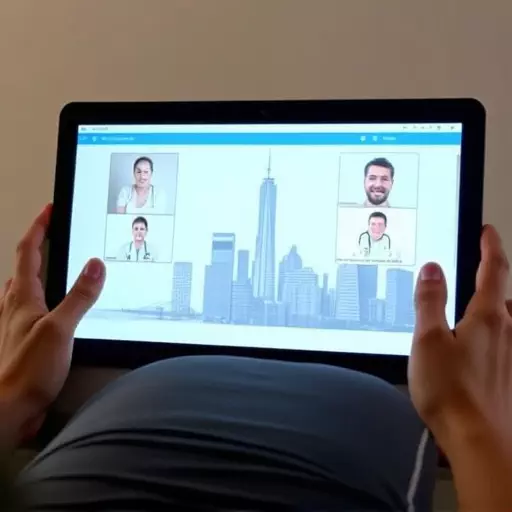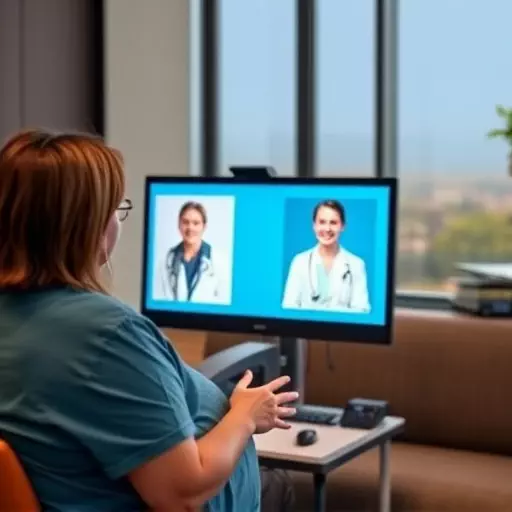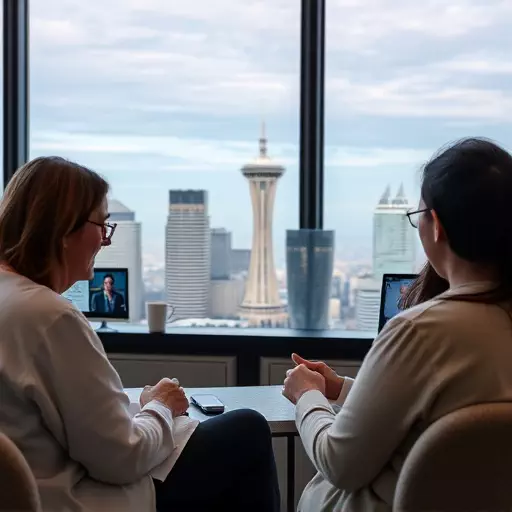In Toledo, GLP-1 (glucagon-like peptide-1) therapy is revolutionized through telemedicine platforms equipped with virtual obesity care consultation tools. These digital solutions enable remote access to personalized weight management programs, allowing healthcare providers to track progress and adjust treatments in real-time, enhancing the effectiveness of GLP-1 therapy while improving patient accessibility. Virtual dashboards streamline data monitoring and provide intuitive insights for both patients and healthcare professionals, fostering timely interventions and improved adherence. This innovative approach promises a game-changing transformation in obesity care, leveraging technology to bridge geographical barriers and offer convenient, specialized care from home.
In the pursuit of effective obesity management, Glucagon-like peptide-1 (GLP-1) therapy has emerged as a powerful tool. This article explores the innovative use of virtual dashboards within GLP-1 therapy progress tracking, leveraging telemedicine platforms to revolutionize obesity treatment. We delve into the rising trend of remote consultations and its impact on patient monitoring. By examining real-world cases, such as the successful implementation in Toledo, we uncover the benefits and challenges of integrating digital tools into obesity care, highlighting their potential to transform traditional treatments.
- Understanding GLP-1 Therapy and Its Impact on Obesity
- The Rise of Telemedicine in Weight Management
- Virtual Dashboards: A Novel Approach to Patient Monitoring
- Benefits of Digital Tools for Obesity Treatment
- Creating an Effective GLP-1 Therapy Tracking System
- Challenges and Considerations for Implementation
- Real-World Success Stories: GLP-1 in Toledo
Understanding GLP-1 Therapy and Its Impact on Obesity

GLP-1 (glucagon-like peptide-1) therapy is a groundbreaking approach in the fight against obesity, offering a novel way to manage weight and improve overall health. This hormone, naturally produced by the gut, plays a crucial role in regulating blood sugar levels and promoting satiety. By mimicking GLP-1’s effects, injectable medications or oral drugs can help individuals struggling with obesity achieve significant weight loss. The impact of this therapy extends beyond weight reduction; it improves insulin sensitivity, reduces appetite, and lowers the risk of various comorbidities associated with obesity, such as heart disease and type 2 diabetes.
In the context of telemedicine platforms for obesity treatment, virtual obesity care consultation tools equipped with GLP-1 monitoring capabilities are transforming healthcare delivery. These innovative solutions enable patients in Toledo and beyond to access personalized weight management programs remotely. Through regular virtual consultations, healthcare providers can track GLP-1 therapy progress, adjust treatments as needed, and offer real-time guidance. This shift towards digital obesity care not only improves patient accessibility but also facilitates a more proactive approach to managing this complex condition, ultimately enhancing the effectiveness of GLP-1 therapy.
The Rise of Telemedicine in Weight Management

The digital transformation in healthcare has significantly reshaped how we approach weight management and GLP-1 therapy. With the rise of telemedicine, patients in Toledo and beyond now have access to innovative virtual obesity care consultation tools that bridge geographical barriers. This shift towards remote healthcare delivery is particularly beneficial for individuals seeking GLP-1 in-toledo, as it offers flexibility and convenience without compromising on personalized treatment plans.
Telemedicine platforms for obesity treatment have proven effective in fostering better patient engagement and adherence to weight loss journeys. Through secure video conferencing, patients can connect with healthcare professionals from the comfort of their homes. These virtual consultations enable comprehensive assessments, including discussions about diet, exercise, and GLP-1 therapy options tailored to individual needs. The integration of real-time data and virtual dashboards further enhances this process, allowing for continuous monitoring and adjustments to treatment strategies, making obesity care more accessible and efficient.
Virtual Dashboards: A Novel Approach to Patient Monitoring

Virtual dashboards are transforming patient monitoring in GLP-1 therapy for obesity treatment. These innovative digital tools, accessible through telemedicine platforms, offer a novel approach to tracking patient progress and enhancing care delivery. By presenting key metrics and data points in an intuitive, user-friendly format, virtual dashboards empower healthcare providers with real-time insights into their patients’ health trajectories.
For instance, GLP-1 therapy adherence rates, glucose levels, body weight changes, and lifestyle modifications can be seamlessly integrated into these dashboards. This centralized view facilitates personalized care plans, enabling healthcare professionals to intervene promptly when necessary. Moreover, telemedicine platforms for obesity treatment leverage virtual obesity care consultation tools, allowing patients to receive guidance and support from the comfort of their homes, thereby improving accessibility and patient engagement in their own healthcare journeys.
Benefits of Digital Tools for Obesity Treatment

Digital tools have revolutionized obesity treatment, offering numerous benefits that enhance both patient care and clinical outcomes. In the context of GLP-1 therapy in Toledo, telemedicine platforms for obesity treatment have emerged as game-changers. These virtual obesity care consultation tools allow patients to access specialized medical expertise remotely, eliminating geographical barriers and making specialized care more accessible. By integrating digital technologies into traditional care models, healthcare providers can offer personalized guidance, monitor patient progress in real-time, and provide timely interventions.
One of the key advantages is the convenience it offers both patients and healthcare professionals. Virtual consultations enable patients to discuss their treatment plans, share concerns, and receive feedback from the comfort of their homes. This shift towards digital care also facilitates more frequent interactions between patients and providers, fostering better adherence to treatment protocols. Additionally, digital tools can streamline data collection and analysis, providing valuable insights into patient progress and allowing for more effective decision-making in GLP-1 therapy management.
Creating an Effective GLP-1 Therapy Tracking System

In the pursuit of effective GLP-1 therapy management, establishing a robust tracking system is paramount. This involves integrating telemedicine platforms for obesity treatment that facilitate regular virtual consultations and data collection. Such systems should be designed to capture key metrics like hormone levels, patient adherence, and therapeutic outcomes, ensuring a comprehensive view of each patient’s progress. By leveraging these digital tools, healthcare providers in Toledo can offer personalized care, even at a distance.
Virtual dashboards play a pivotal role in this process, presenting data in an easily digestible manner. These platforms allow patients and doctors to monitor GLP-1 therapy together, making informed decisions. With real-time insights into treatment response, telemedicine consultation tools become powerful enablers for managing obesity effectively, offering a more accessible and potentially game-changing approach to care.
Challenges and Considerations for Implementation
Implementing virtual dashboards for GLP-1 therapy progress presents several challenges and considerations. One key obstacle is ensuring patient data security and privacy, especially when integrating with telemedicine platforms for obesity treatment. With sensitive medical information being exchanged, robust cybersecurity measures are essential to safeguard against potential breaches.
Additionally, the effectiveness of these virtual tools relies heavily on user-friendly design and intuitive navigation. For patients unfamiliar with digital platforms, simple and clear interfaces that facilitate easy understanding and interaction are crucial. Moreover, healthcare providers must be adequately trained to utilize these dashboards efficiently, ensuring they can extract meaningful insights from the data to optimize GLP-1 therapy plans within virtual obesity care consultation tools.
Real-World Success Stories: GLP-1 in Toledo

In real-world settings, GLP-1 therapy has shown remarkable success in managing obesity and improving patient outcomes. One notable example is the implementation of GLP-1 in Toledo, a city that has embraced innovative healthcare solutions. Through telemedicine platforms for obesity treatment, residents now have access to specialized care from the comfort of their homes. This shift towards virtual obesity care consultation tools has been transformative, allowing patients to connect with healthcare professionals, receive personalized guidance, and monitor their progress on a regular basis.
The adoption of GLP-1 in Toledo highlights how technology can enhance traditional healthcare delivery models. By leveraging telemedicine, the city has fostered a more inclusive and accessible approach to obesity management. This success story serves as inspiration for other communities, demonstrating that virtual dashboards and remote consultations can significantly improve patient engagement and adherence to treatment plans, ultimately leading to better health outcomes.
